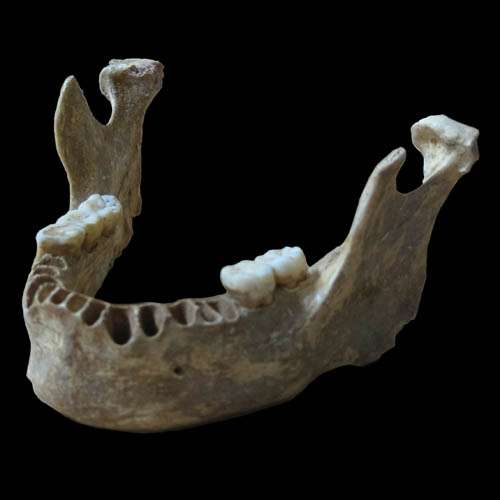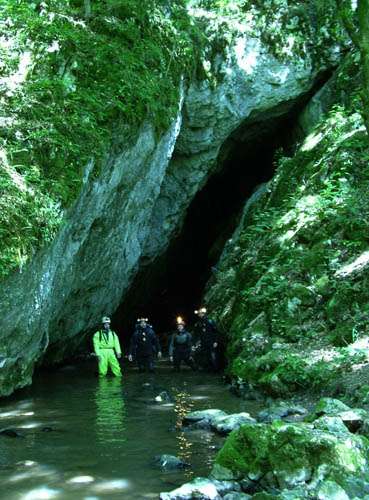Scientists discover an early modern human with a recent neanderthal ancestor

Neanderthals are thought to have disappeared in Europe approximately 39,000–41,000 years ago but they have contributed 1–3% of the DNA of present-day people in Eurasia. Surprisingly, analyses of present-day genomes have not yielded any evidence that Neanderthals mixed with modern humans in Europe, despite the fact that Neanderthals were numerous there and cultural interactions between the two groups have been proposed. Dr. FU Qiaomei, Institute of Vertebrate Paleontology and Paleoanthropology of Chinese Academy of Sciences (IVPP), and scientists from Germany, USA, Romania and Canada, discovered that a 37,000–42,000-year-old modern human from Peştera cu Oase, Romania had the order of 6–9% of the genome derived from Neanderthals, more than any other modern human sequenced to date.
The finding published online June 22 in Nature suggests that the mixture between modern humans and Neanderthals was not limited to the first ancestors of present-day people to leave Africa, or to people in the Near East, and it occurred later as well and probably in Europe.
Oase 1, a modern human mandible, was found in 2002 in the Peştera cu Oase, Romania. The age of this specimen has been estimated to be,37,000–42,000 years by direct radiocarbon dating. Oase 1 is therefore one of the earliest modern humans in Europe. Its morphology is generally modern but some aspects are consistent with Neanderthal ancestry.
Researchers prepared two DNA extracts from 25 mg and 10 mg of bone powder removed from the inferior right ramus of Oase 1. Although the specimen contains small amounts of human DNA, they used an enrichment strategy to isolate sites that are informative about its relationship to Neanderthals and present-day humans, and discovered that on the order of 6–9% of the genome of the Oase individual is derived from Neanderthals, more than any other modern human sequenced to date. Three chromosomal segments of Neanderthal ancestry are over 50 centimorgans in size, indicating that this individual had a Neanderthal ancestor as recently as four to six generations back. "However, the Oase individual does not share more alleles with later Europeans than with East Asians, suggesting that the Oase population did not contribute substantially to later humans in Europe", said FU Qiaomei, lead author of the study.

"The fact that the Oase 1 individual had a Neanderthal ancestor removed by only four to six generations allows this Neanderthal admixture to be dated to less than 200 years before the time he lived. However, the absence of a clear relationship of the Oase 1 individual to later modern humans in Europe suggests that he may have been a member of an initial early modern human population that interbred with Neanderthals but did not contribute much to later European populations. To better understand the interactions between early modern and Neanderthal populations, it will be important to study other specimens that, like Oase 1, have been suggested to carry morphological traits suggestive of admixture with Neanderthals", said lead author Dr. Mateja Hajdinjak, Department of Evolutionary Genetics, Max Planck Institute for Evolutionary Anthropology.
More information: "An early modern human from Romania with a recent Neanderthal ancestor." Nature (2015) DOI: 10.1038/nature14558
Journal information: Nature




















